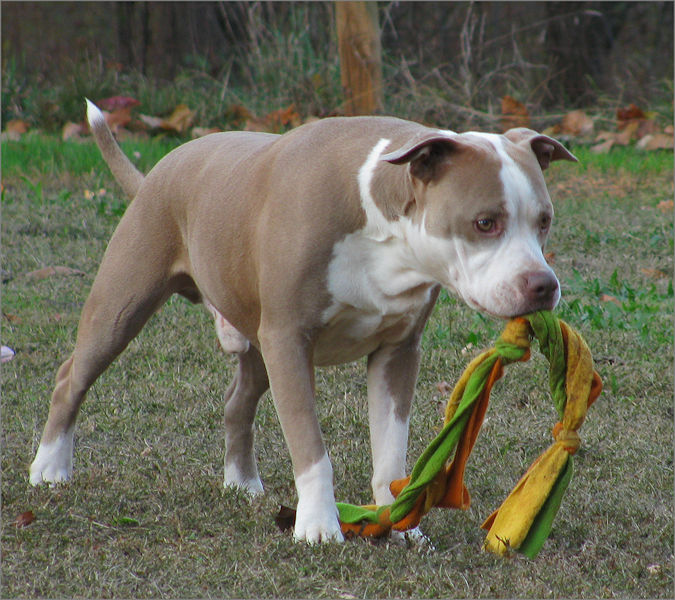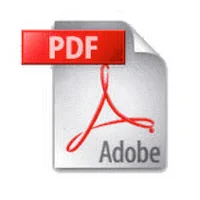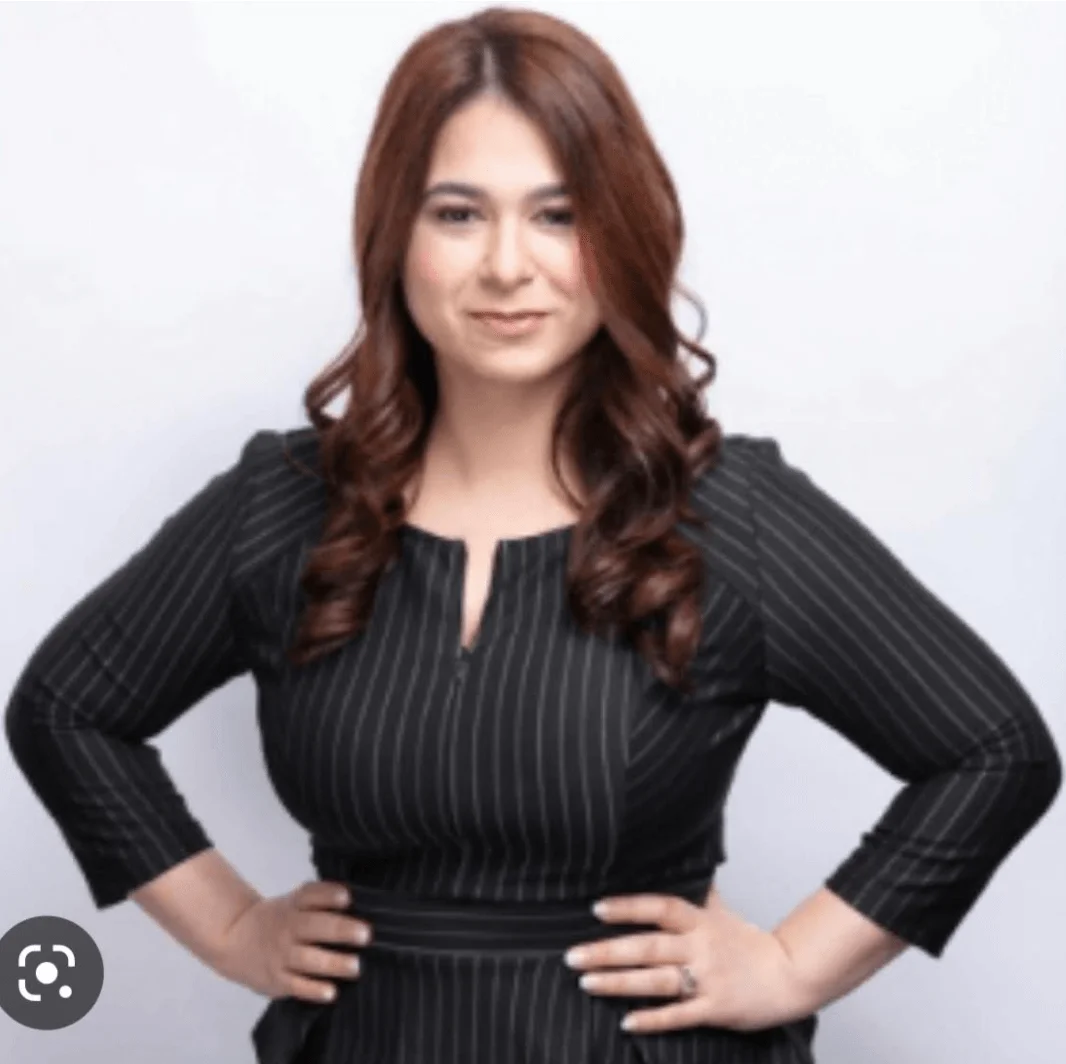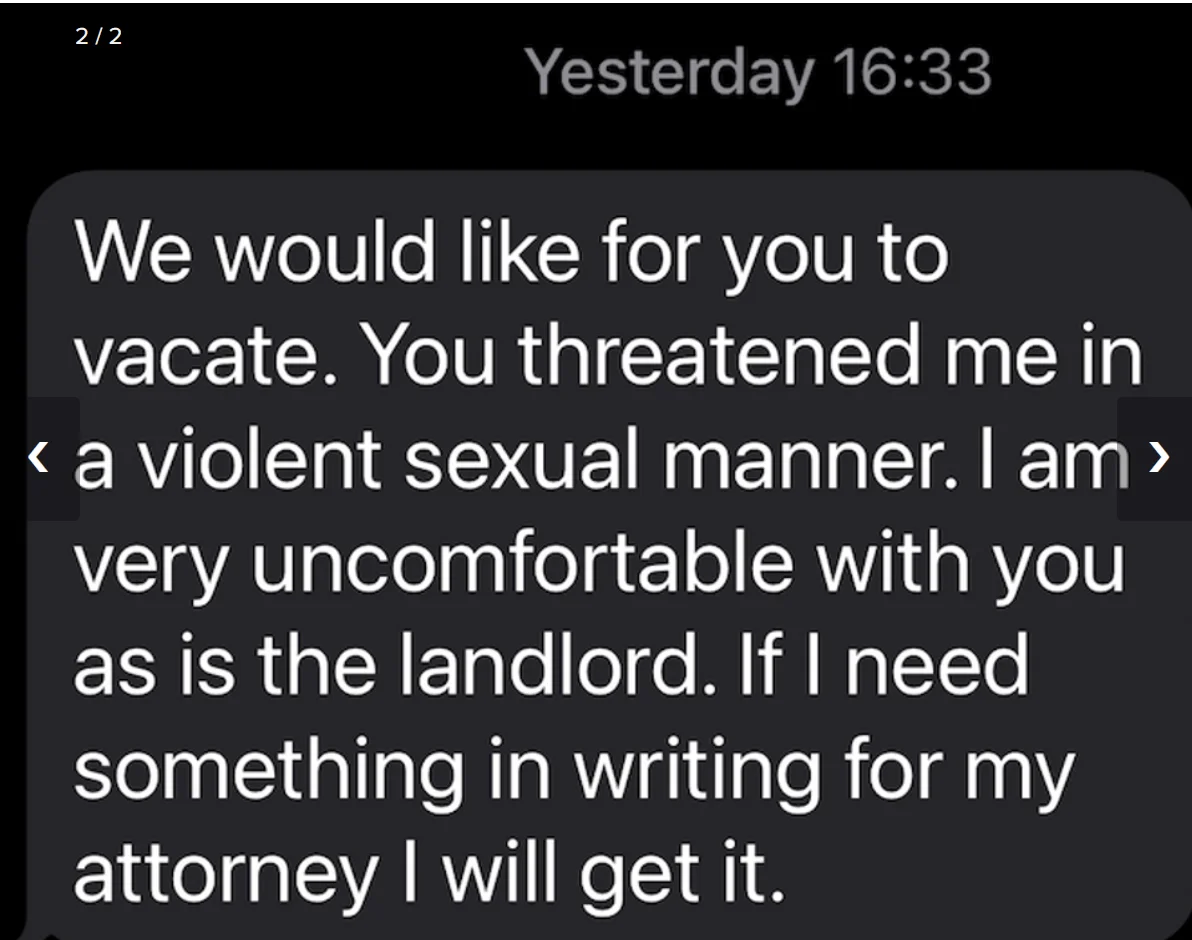- Report: #1275205
Complaint Review: YORK KENNELS - Nationwide
YORK KENNELS Ginny York BUYER BEWERE Of These people since 1977 they been lying and Tagged and Doing fraud. This people have American Staffordshire Terriers Cross. These people don't have American Pit Bull Terriers. Amherst, Virginia Nationwide
Report Attachments
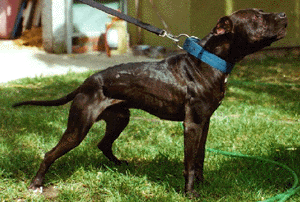
Standard - American Pit Bull Terriers
HISTORY
Sometime during the nineteenth century, dog fanciers in England, Ireland, and Scotland began to experiment with crosses between Bulldogs and Terriers, looking for a dog that combined the gameness of the terrier with the strength and athleticism of the Bulldog. The result was a dog that embodied all of the virtues attributed to great warriors: strength, indomitable courage, and gentleness with loved ones. Immigrants brought these bull and terrier crosses to the United States. The American Pit Bull Terrier's many talents did not go unnoticed by farmers and ranchers who used their APBTs for protection, as catch dogs for semi-wild cattle and hogs, to hunt, to drive livestock, and as family companions. Today, the American Pit Bull Terrier continues to demonstrate its versatility, competing successfully in Obedience, Tracking, Agility, Protection, and Weight Pulls, as well as Big Game Hunting.
GENERAL APPEARANCE
The American Pit Bull Terrier is a medium-sized, solidly built, short-coated dog with smooth, well-defined musculature. This breed is both powerful and athletic. The body is just slightly longer than tall, but bitches may be somewhat longer in body than dogs. The length of the front leg (measured from point of elbow to the ground) is approximately equal to one-half of the dog's height at the withers. The head is of medium length, with a broad, flat skull, and a wide, deep muzzle. Ears are small to medium in size, high set, and may be natural or cropped. The relatively short tail is set low, thick at the base and tapers to a point. The American Pit Bull Terrier comes in all colors and color patterns. This breed combines strength and athleticism with grace and agility and should never appear bulky or muscle-bound or fine-boned and rangy.
CHARACTERISITCS
The essential characteristics of the American Pit Bull Terrier are strength, confidence, and zest for life. This breed is eager to please and brimming over with enthusiasm. APBTs make excellent family companions and have always been noted for their love of children. Because most APBTs exhibit some level of dog aggression and because of its powerful physique, the APBT requires an owner who will carefully socialize and obedience train the dog. The breed's natural agility makes it one of the most capable canine climbers so good fencing is a must for this breed. The APBT is not the best choice for a guard dog since they are extremely friendly, even with strangers. Aggressive behavior toward humans is uncharacteristic of the breed and highly undesirable. This breed does very well in performance events because of its high level of intelligence and its willingness to work.
The American Pit Bull Terrier has always been capable of doing a wide variety of jobs so exaggerations or faults should be penalized in proportion to how much they interfere with the dog's versatility.
HEAD - The APBT head is unique and a key element of breed type. It is large and broad, giving the impression of great power, but it is not disproportionate to the size of the body. Viewed from the front, the head is shaped like a broad, blunt wedge. When viewed from the side, the skull and muzzle are parallel to one another and joined by a well defined, moderately deep stop. Supraorbital arches over the eyes are well defined but not pronounced. The head is well chiseled, blending strength, elegance, and character.
SKULL - The skull is large, flat or slightly rounded, deep, and broad between the ears. Viewed from the top, the skull tapers just slightly toward the stop. There is a deep median furrow that diminishes in depth from the stop to the occiput. Cheek muscles are prominent but free of wrinkles. When the dog is concentrating, wrinkles form on the forehead, which give the APBT his unique expression.
MUZZLE - The muzzle is broad and deep with a very slight taper from the stop to the nose, and a slight falling away under the eyes. The length of muzzle is shorter than the length of skull, with a ratio of approximately 2:3. The topline of the muzzle is straight. The lower jaw is well developed, wide and deep. Lips are clean and tight.
Faults: Snipey muzzle; flews; weak lower jaw.
EYES - Eyes are medium size, round to almond-shaped, and set well apart and low on the skull. All colors are equally acceptable except blue, which is a serious fault. Haw should not be visible.
Serious Faults: Bulging eyes; both eyes not matched in color; blue eyes.
TEETH - The American Pit Bull Terrier has a complete set of evenly spaced, white teeth meeting in a scissors bite.
Fault: Level bite.
Serious Faults: Undershot, or overshot bite; wry mouth; missing teeth (this does not apply to teeth that have been lost or removed by a veterinarian).
NOSE - The nose is large with wide, open nostrils. The nose may be Red and Black.
EARS - Ears are high set and may be natural or cropped without preference. If natural, semi-p***k or rose are preferred. p***k or flat, wide ears are not desired.
NECK - The neck is of moderate length and muscular. There is a slight arch at the crest. The neck widens gradually from where it joins the skull to where it blends into well laid-back shoulders. The skin on the neck is tight and without dewlap.
Faults: Neck too short and thick; thin or weak neck; ewe neck; dewlap.
FOREQUARTERS - The shoulder blades are long, wide, muscular, and well laid back. The upper arm is roughly equal in length to the shoulder blade and joins it at an apparent right angle.
The forelegs are strong and muscular. The elbows are set close to the body. Viewed from the front, the forelegs are set moderately wide apart and perpendicular to the ground. The pasterns are short, powerful, straight, and flexible. When viewed in profile, the pasterns are nearly erect.
Faults: Upright or loaded shoulders; elbows turned outward or tied-in; down at the pasterns; front legs bowed; wrists knuckled over; toeing in or out.
BODY - The chest is deep, well filled in, and moderately wide with ample room for heart and lungs, but the chest should never be wider than it is deep. The forechest does not extend much beyond the point of shoulder. The ribs extend well back and are well sprung from the spine, then flattening to form a deep body extending to the elbows. The back is strong and firm. The topline inclines very slightly downward from the withers to a broad, muscular, level back. The loin is short, muscular and slightly arched to the top of the croup, but narrower than the rib cage and with a moderate tuck-up. The croup is slightly sloping downward.
HINDQUARTERS - The hindquarters are strong, muscular, and moderately broad. The rump is well filled in on each side of the tail and deep from the pelvis to the crotch. The bone, angulation, and musculature of the hindquarters are in balance with the forequarters. The thighs are well developed with thick, easily discerned muscles. Viewed from the side, the hock joint is well bent and the rear pasterns are well let down and perpendicular to the ground. Viewed from the rear, the rear pasterns are straight and parallel to one another.
Faults: Narrow hindquarters; hindquarters shallow from pelvis to crotch; lack of muscle; straight or over angulated stifle joint; cow hocks; sickle hocks; bowed legs.
FEET - The feet are round, proportionate to the size of the dog, well arched, and tight. Pads are hard, tough, and well cushioned. Dewclaws may be removed.
Fault: Splayed feet.
TAIL - The tail is set on as a natural extension of the topline, and tapers to a point. When the dog is relaxed, the tail is carried low and extends approximately to the hock. When the dog is moving, the tail is carried level with the backline. When the dog is excited, the tail may be carried in a raised, upright position (challenge tail), but never curled over the back (gay tail).
Fault: Long tail (tail tip passes beyond point of hock).
Serious faults: Gay tail (not to be confused with challenge tail); kinked tail.
Disqualification: Bobbed tail.
COAT - The coat is glossy and smooth, close, and moderately stiff to the touch.
Faults: Curly, Wavy, or sparse coat.
Disqualification: Long coat.
COLOR - Any color, color pattern, or combination of colors is acceptable, except for merle, blue or gray.
Disqualification: Merle, Blue, Gray
HEIGHT and WEIGHT - The American Pit Bull Terrier must be both powerful and agile so actual weight and height are less important than the correct proportion of weight to height. Desirable weight for a mature male in good condition is between 35 and 75 pounds. Desirable weight for a mature female in good condition is between 30 and 65 pounds. Dogs over these weights are not to be penalized unless they are disproportionately massive or rangy.
GAIT - The American Pit Bull Terrier moves with a jaunty, confident attitude, conveying the impression that he expects any minute to see something new and exciting. When trotting, the gait is effortless, smooth, powerful, and well coordinated, showing good reach in front and drive behind. When moving, the backline remains level with only a slight flexing to indicate suppleness. Viewed from any position, legs turn neither in nor out, nor do feet cross or interfere with each other. As speed increases, feet tend to converge toward center line of balance.
Faults: Legs not moving on the same plane; legs over reaching; legs crossing over in front or rear; rear legs moving too close or touching; rolling; pacing; paddling; sidewinding; hackney action; pounding.
DISQUALIFICATIONS - Unilateral or bilateral cryptorchid. Viciousness or extreme shyness. Unilateral or bilateral deafness. Bobbed tail. Albinism. Blue, Gray, Merle. Long coat.
Report Attachments

2 Updates & Rebuttals
Purllple
Sarasota ,Florida,
USA
Alabama, the bad kind of bully
#2Consumer Comment
Sat, December 03, 2016
I have had APBT in my home for over 25 years now. In that time I've owned 5 APBT and I think I have a profound understanding of the breed. About 12 years ago, I visited Ginny's facility to purchase a puppy. Her dogs were healthy, well behaved, well cared for, and beautiful. I spent time with the puppies in the play area before picking out one. I was given UkC registration with lineage going back 16 generations. I can not stress this next point enough. It was the best decision I've ever made. I love all my dogs but this was the best dog I've ever had. He grew into a beautiful boy. Everyone that met him was impressed with him. It's distressing what's happened to the breed in the last 10 years. Breeders cross breeding APBT with other breeds to exaggerate certain physical traits. I understand the impulse to defend the breed in its purest sense. But attacking York kennels is misguided. She is not part of the problem. On the other hand, if you happen to be a breeder of "true American Pit Bull Terriers" , then she is your competition. From what I've seen, she is far superior. More over, it's an amateurish tatic to file complaints on the internet to discredit someone for personal gain. Particularly using self righteous moral high ground as evidence. I would recommend York kennels to anyone confidently. Someday I will be lucky enough to get another dog from Ginny.
York Kennels
Amherst,Virginia,
USA
In Response - from York Kennels
#3REBUTTAL Owner of company
Mon, December 21, 2015
One of the questions I have been asked most over the years is "What is the difference between an American Pit Bull Terrier (APBT - registered with the United Kennel Club) and an American Staffordshire Terrier (AST - registered with the American Kennel Club). The answer to that question is the registry they are registered with. They are the same breed. Back in the mid 30's the APBT people wanted to show their dogs, but UKC didn't have shows back then. So they partitioned (asked) the AKC to have their APBT's registered with them. The AKC refused to register the APBT's under the name American Pit Bull Terrier, due to the word PIT being in the name as that was where some of this breed were fought. A few names were tossed around by the club of people who wanted to register with the AKC. Yankee Terrier was one of the first names, and was even put into publication by Will Judy in the 1936 Dog Encyclodedia. But not all the members wanted that name and so Rebel Terrier was put out there. Basically, what happened was because the people who wanted to register with the AKC couldn't decide on a name ....The AKC chose Staffordshire Terrier. Later on American was added in front of the name. And so people who wanted to register their APBT's with the AKC had to call them by the name American Staffordshire Terrier. So all American Staffordshire Terriers ARE American Pit Bull Terriers called by a different name. In order to register litters, both dogs have to be registered with the same Kennel Club. All along throughout history breeders have been breeding different *Types* of APBT/AST's which has always resulted in a big variety of sizes and shapes within this breed.
I was an inspector for Single Registraion back when an individual was required to see each dog in person that was to be single registered with the United Kennel Club (UKC) We were allowed to accept only 3 registries....AKC ....ADBA (American Dog Breeders Association) - and CKC (Canadian Kennel Club). We had to see and send in 3 photos of the dog...one front the front...and one from each side of the dog, plus a copy of at least 3 generations of ancestors from the registry that the dog was with. All these dogs that were accepted were registered as American Pit Bull Terriers. UKC recognizes that they are the same breed.
American Bullies are a little different. Lately I have talked to quite a few breeders of them and have found that English Bulldogs , French Bulldogs, and a couple of ohters have been bred into them to make them a seperate breed. UKC registers this type as an American Bully.
I hope this clears up some of the issues that have been brought up.
Thanks to all the people who have bought dogs from me and come back 14 to 15 years later for another one. I appreciate the wonderful homes you have given my dogs.
Report Attachments
